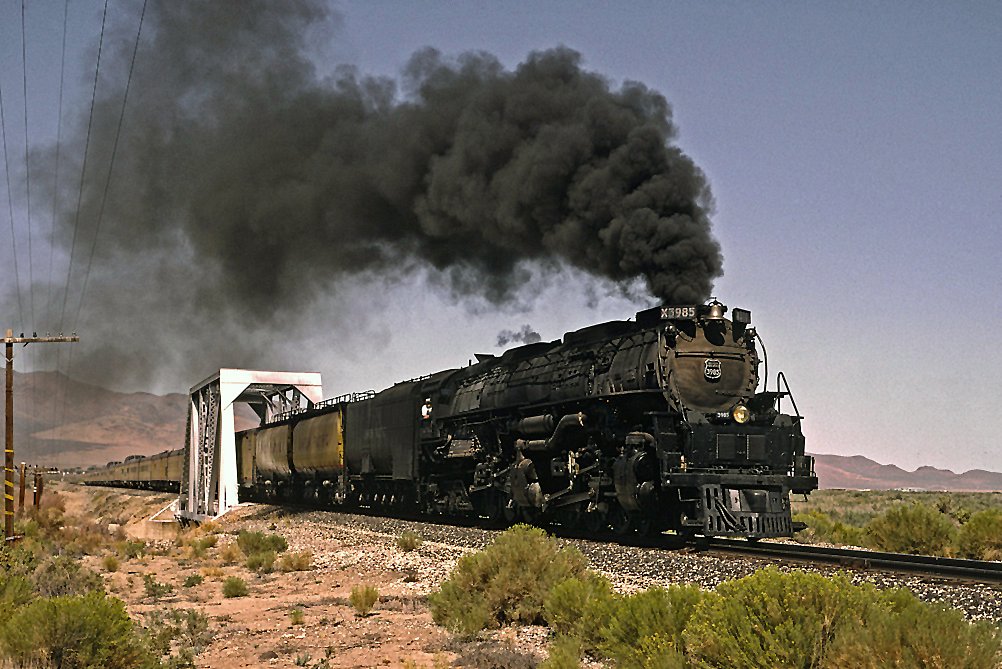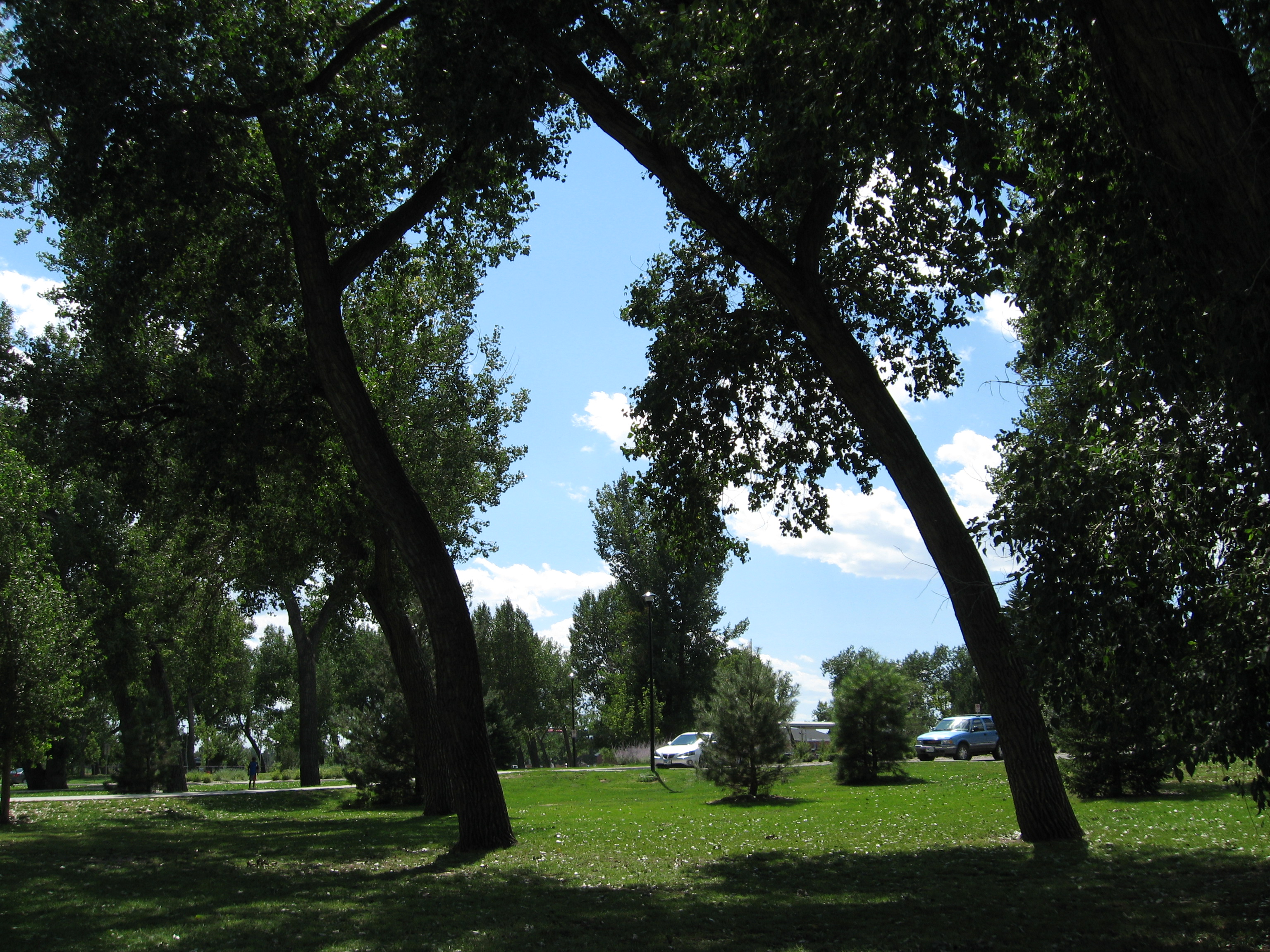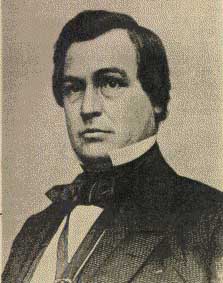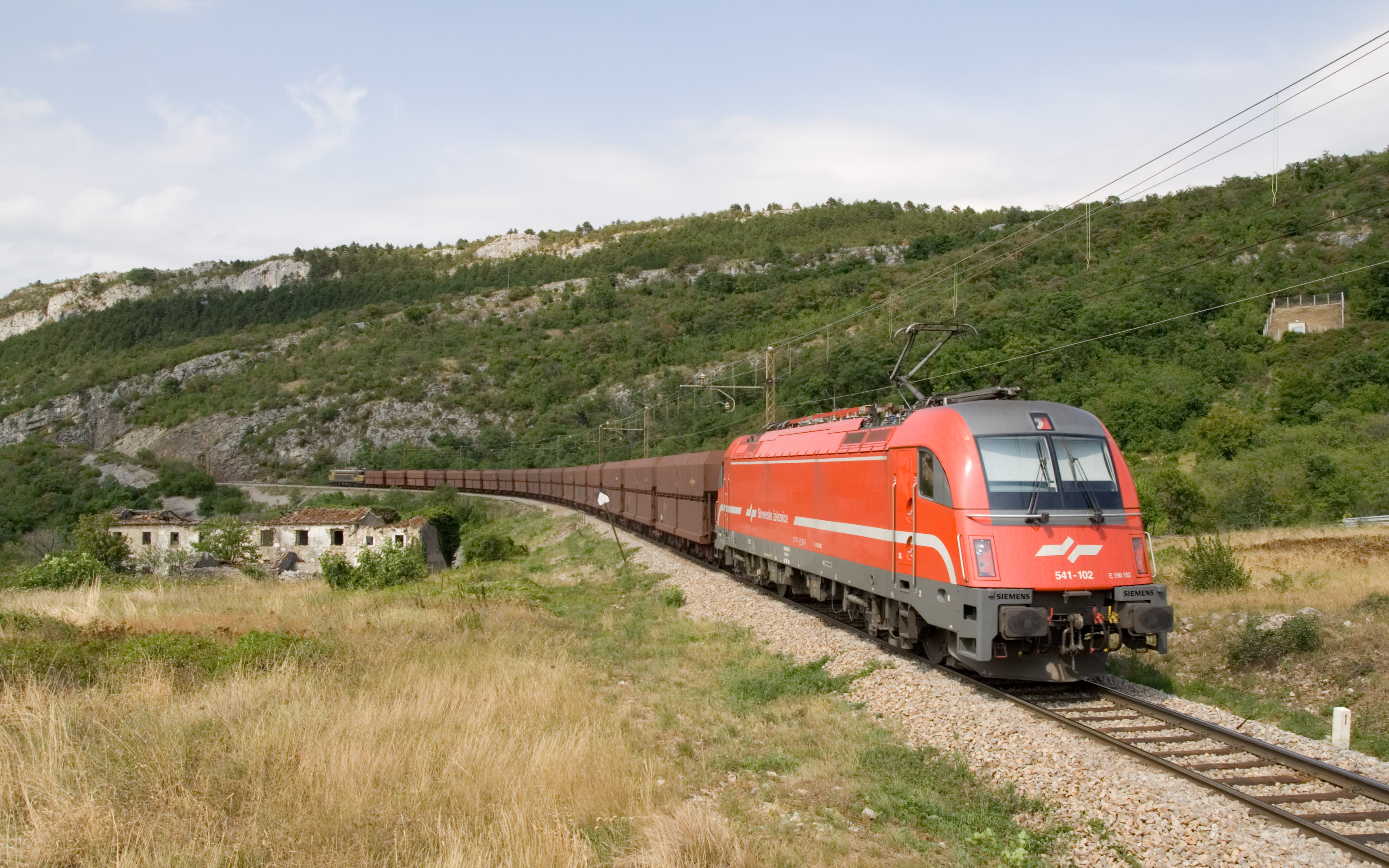|
Union Pacific Challenger
The Union Pacific Challengers are a type of simple articulated 4-6-6-4 steam locomotive built by American Locomotive Company (ALCO) from 1936 to 1944 and operated by the Union Pacific Railroad until the late 1950s. A total of 105 Challengers were built in five classes. They were nearly long and weighed 537 short tons (487 tonnes). They operated over most of the Union Pacific system, primarily in freight service, but a few were assigned to the ''Portland Rose'' and other passenger trains. Their design and operating experience shaped the design of the Big Boy locomotive type, which in turn shaped the design of the last three orders of Challengers. Two Union Pacific Challengers survive. The most notable is Union Pacific No. 3985, which was restored by the Union Pacific in 1981, then operated in excursion service as part of its heritage fleet program. Mechanical problems forced it out of service in October 2010; it was retired in January 2020 after the restoration of the 4-8-8 ... [...More Info...] [...Related Items...] OR: [Wikipedia] [Google] [Baidu] |
Union Pacific 3985
Union Pacific 3985 is a four-cylinder Articulated locomotive, articulated 4-6-6-4 "Union Pacific Challenger, Challenger"-type steam locomotive built in July 1943 by the American Locomotive Company (ALCO) of Schenectady, New York, for the Union Pacific Railroad. No. 3985 is one of only two Challengers still in existence and the only one to have operated in Excursion train, excursion service. No. 3985 operated in revenue service until 1957. It was then stored in the railroad roundhouse, roundhouse in Cheyenne, Wyoming, until 1975, when it was placed outdoors beside the Cheyenne Depot Museum, Cheyenne depot. In March 1981, after a group of Union Pacific employees restored the locomotive to operating condition, it was placed into Excursion train, excursion service as part of the Union Pacific's Union Pacific Heritage Fleet, heritage fleet and became the world's largest operational steam locomotive. Mechanical problems took it offline in 2010, after which it was stored at the Union Pa ... [...More Info...] [...Related Items...] OR: [Wikipedia] [Google] [Baidu] |
Wasatch Range
The Wasatch Range ( ) or Wasatch Mountains is a mountain range in the western United States that runs about from the Utah-Idaho border south to central Utah. It is the western edge of the greater Rocky Mountains, and the eastern edge of the Great Basin region.''Hiking the Wasatch'', John Veranth, 1988, Salt Lake City, The northern extension of the Wasatch Range, the Bear River Mountains, extends just into Idaho, constituting all of the Wasatch Range in that state. In the language of the native Ute people, Wasatch means "mountain pass" or "low pass over high range." According to William Bright, the mountains were named for a Shoshone people, Shoshoni leader who was named with the Shoshoni term ''wasattsi'', meaning "blue heron". In 1926, Cecil Alter quoted Henry Gannett from 1902, who said that the word meant "land of many waters," then posited, "the word is a common one among the Shoshones, and is given to a berry basket" carried by women. Overview Since the earliest days of ... [...More Info...] [...Related Items...] OR: [Wikipedia] [Google] [Baidu] |
Silvis, Illinois
Silvis is a city in Rock Island County, Illinois, Rock Island County, Illinois, United States. It is part of a larger metropolitan area known as the Quad Cities. The Quad Cities Metropolitan Area is situated across four counties in Illinois and Iowa. It is located from the intersection of Interstate 80 and Interstate 88 (Illinois), Interstate 88, of Chicago, and east of Des Moines. It sits next to East Moline, Illinois, East Moline and Moline, Illinois. Silvis is near two major medical centers, including a critical access center. Silvis also has two community college districts, a liberal arts college, a public university auxiliary campus, two private universities, and two extension services in the area. Demographics As of 2019, the population of Silvis is 7,475 with 2,984 households, and 1,939 families residing in the city. The population density was . There were 3,135 housing units at an average density of . The racial makeup of the city was 86.09% White (U.S. Census), White, ... [...More Info...] [...Related Items...] OR: [Wikipedia] [Google] [Baidu] |
Cheyenne, Wyoming
Cheyenne ( or ) is the List of capitals in the United States, capital and List of municipalities in Wyoming, most populous city of the U.S. state of Wyoming. It is the county seat of Laramie County, Wyoming, Laramie County, with 65,132 residents per the 2020 United States census, 2020 census. It is the principal city of the Cheyenne metropolitan area, which encompasses all of Laramie County and had 100,512 residents as of the 2020 census. Local residents named the town for the Cheyenne Native Americans in the United States, Native American people in 1867 when it was founded in the Dakota Territory. Along with Honolulu, Hawaii, Oklahoma City, Oklahoma, and Topeka, Kansas, Cheyenne is one of four state capitals with an indigenous name in a state with an indigenous name. Cheyenne is the northern terminus of the extensive Southern Rocky Mountain Front, which extends southward to Albuquerque, New Mexico, and includes the fast-growing Front Range Urban Corridor. Cheyenne is situated ... [...More Info...] [...Related Items...] OR: [Wikipedia] [Google] [Baidu] |
Clinchfield Railroad
The Clinchfield Railroad was an operating and holding company for the Carolina, Clinchfield and Ohio Railway . The line ran from the coalfields of Virginia and Elkhorn City, Kentucky, to the textile mills of South Carolina. The 35-mile segment from Dante, Virginia, to Elkhorn City, opening up the coal lands north of Sandy Ridge Mountains and forming a connection with the Chesapeake and Ohio Railway at Elkhorn City, was completed in 1915. The Clinchfield was the last Class I railroad built in the U.S. east of the Rocky Mountains. The 266-mile railroad provided access to numerous scenic wonders of the Appalachian region and is probably best known for the state-of-the-art railroad engineering techniques applied in its construction, as exemplified by the Clinchfield Loops climbing the Blue Ridge Mountains north of Marion, North Carolina. The Clinchfield Railroad began operating the line December 1, 1924, and for many years it was leased jointly by the Atlantic Coast Line Rail ... [...More Info...] [...Related Items...] OR: [Wikipedia] [Google] [Baidu] |
Denver And Rio Grande Western Railroad
The Denver and Rio Grande Western Railroad , often shortened to ''Rio Grande'', D&RG or D&RGW, formerly the Denver & Rio Grande Railroad, was an American Class I railroad company. The railroad started as a narrow-gauge line running south from Denver, Colorado, in 1870. It served mainly as a transcontinental bridge line between Denver and Ogden, Utah. The Rio Grande was also a major origin of coal and mineral traffic. The Rio Grande was a strong example of mountain railroading, with a motto of ''Through the Rockies, not around them'' and later ''Main line through the Rockies'', both referring to the Rocky Mountains. The D&RGW operated the highest mainline rail line in the United States, over the Tennessee Pass in Colorado, and the famed routes through the Moffat Tunnel and the Royal Gorge. At its height, in 1889, the D&RGW had the largest narrow-gauge railroad network in North America with of track interconnecting the states of Colorado, New Mexico, and Utah. Known ... [...More Info...] [...Related Items...] OR: [Wikipedia] [Google] [Baidu] |
War Production Board
The War Production Board (WPB) was an agency of the United States government that supervised war production during World War II. President Franklin D. Roosevelt established it in January 1942, with Executive Order 9024. The WPB replaced the Supply Priorities and Allocations Board and the Office of Production Management. The WPB directed conversion of companies engaged in activities relevant to war from peacetime work to war needs, allocated scarce materials, established priorities in the distribution of materials and services, and prohibited nonessential production. It rationed such commodities as gasoline, heating oil, metals, rubber, paper, and plastics. It was dissolved almost exactly two months after the defeat of Japan in 1945 and was replaced by the Civilian Production Administration in late 1945. In 1942–1945, WPB supervised the production of $183 billion (equivalent to $ in ) worth of weapons and supplies, about 40 percent of the world output of munitions ... [...More Info...] [...Related Items...] OR: [Wikipedia] [Google] [Baidu] |
Laramie, Wyoming
Laramie () is a List of municipalities in Wyoming, city in and the county seat of Albany County, Wyoming, United States, known for its high elevation at , for its railroad history, and as the home of the University of Wyoming. The population was 31,407 at the 2020 United States census, 2020 census, making it the List of municipalities in Wyoming, fourth-most populous city in Wyoming. Located on the Laramie River in southeastern Wyoming, the city is west of Cheyenne and north of the Colorado state line, at the junction of Interstate 80 in Wyoming, Interstate 80 and U.S. Route 287#Wyoming, U.S. Route 287. After 12,000 years or more of Indigenous populations living in the area, Laramie was settled by European Americans in 1868 with the completion of the Union Pacific Railroad line to the area, which crosses the Laramie River at Laramie. The river and several creeks fed by freshwater springs made the area an attractive place for settlement. It is home to the University of Wyoming, ... [...More Info...] [...Related Items...] OR: [Wikipedia] [Google] [Baidu] |
Denver
Denver ( ) is a List of municipalities in Colorado#Consolidated city and county, consolidated city and county, the List of capitals in the United States, capital and List of municipalities in Colorado, most populous city of the U.S. state of Colorado. It is located in the Western United States, in the South Platte River, South Platte River Valley on the western edge of the High Plains (United States), High Plains east of the Front Range of the Rocky Mountains. With a population of 715,522 as of the 2020 United States census, 2020 census, a 19.22% increase since 2010 United States census, 2010, Denver is the List of United States cities by population, 19th most populous city in the United States and the fifth most populous state capital. Denver is the principal city of the Denver metropolitan area, Denver Metropolitan area (which includes over 3 million people), as well as the economic and cultural center of the broader Front Range Urban Corridor, Front Range, home to more than ... [...More Info...] [...Related Items...] OR: [Wikipedia] [Google] [Baidu] |
World War II
World War II or the Second World War (1 September 1939 – 2 September 1945) was a World war, global conflict between two coalitions: the Allies of World War II, Allies and the Axis powers. World War II by country, Nearly all of the world's countries participated, with many nations mobilising all resources in pursuit of total war. Tanks in World War II, Tanks and Air warfare of World War II, aircraft played major roles, enabling the strategic bombing of cities and delivery of the Atomic bombings of Hiroshima and Nagasaki, first and only nuclear weapons ever used in war. World War II is the List of wars by death toll, deadliest conflict in history, causing World War II casualties, the death of 70 to 85 million people, more than half of whom were civilians. Millions died in genocides, including the Holocaust, and by massacres, starvation, and disease. After the Allied victory, Allied-occupied Germany, Germany, Allied-occupied Austria, Austria, Occupation of Japan, Japan, a ... [...More Info...] [...Related Items...] OR: [Wikipedia] [Google] [Baidu] |
Bank Engine
A bank engine (United Kingdom/Australia) (colloquially a banker), banking engine, helper engine or pusher engine (North America) is a railway locomotive that temporarily assists a train that requires additional power or traction to climb a gradient (or ''bank''). Helpers/bankers are most commonly found in mountain divisions (called "helper districts" in the United States), where the ruling grade may demand the use of substantially greater motive power than that required for other grades within the division. Historic practice Helpers/bankers were most widely used during the age of steam, especially in the American West, where significant grades are common and trains are long. The development of diesel-electric or electric locomotives has eliminated the everyday need for bankers/helpers in all but a few locations. With the advent of dynamic brakes on electric or diesel-electric locomotives, helpers/bankers can also be used to provide more braking force on long downhill gradi ... [...More Info...] [...Related Items...] OR: [Wikipedia] [Google] [Baidu] |
Double Heading
In railroad terminology, double heading indicates the use of two locomotives at the front of a train, each operated individually by its own crew. The practice of triple-heading involves the use of three locomotives. The practice of multi-heading involves the use of multiple locomotives and so on. Double heading is most common with steam locomotives, but is also practised with diesel locomotives. It is not strictly the same practice as two or more diesel or electric locomotives working ' in multiple' (or 'multiple-working'), where both (or all) locomotives are controlled by a single driver in the cab of the leading locomotive. Advantages Double heading is practised for a number of reasons: * In the UK it was usually to gain traction on steep inclines, twice the amount of driven wheels – twice the amount of grip. * The need for additional motive power when a single locomotive is unable to haul the train due to uphill grades, excessive train weight, or a combination of the tw ... [...More Info...] [...Related Items...] OR: [Wikipedia] [Google] [Baidu] |










